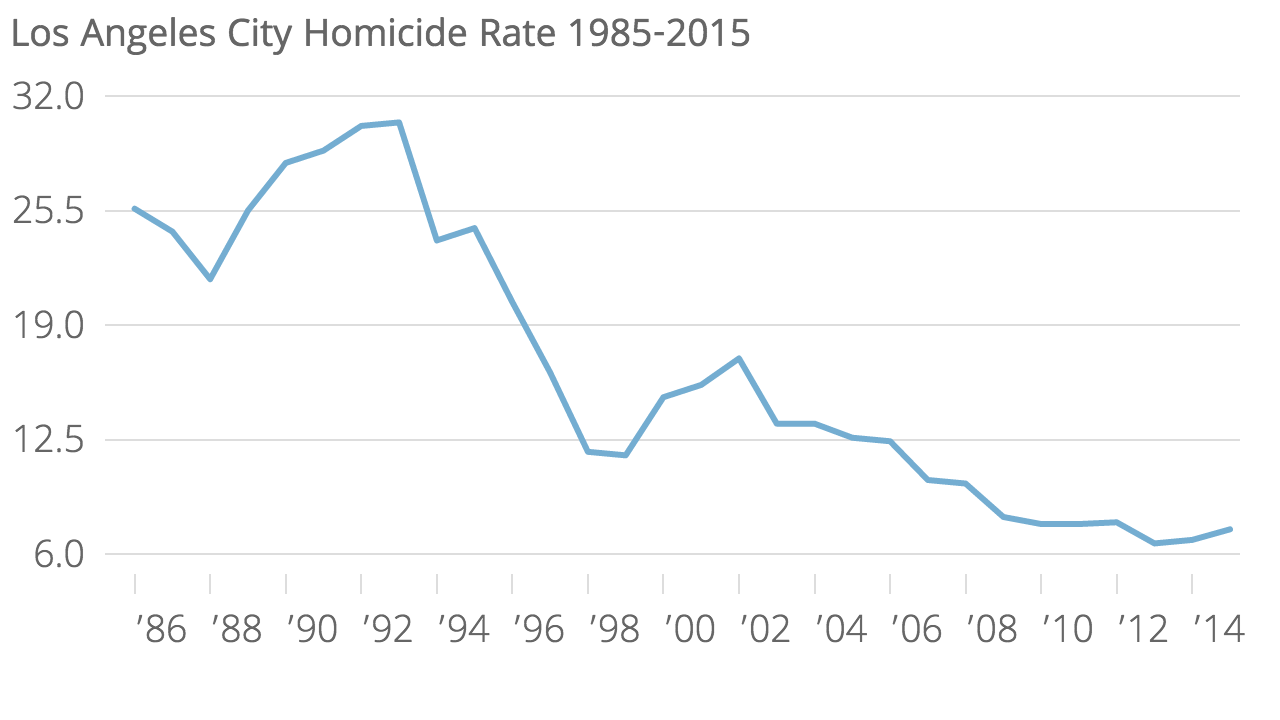Back when he was a beat cop in the late ‘80s and early ‘90s, the peak years of violent crime in Los Angeles, Lt. Michael Carodine worked in the Nickerson Gardens Housing project in South L.A. The residents there called him Green Eyed Mike. Throughout his 31-year career, Lt. Carodine has always approached police work with the idea that you treat all people, including gang members, as human beings, “I really didn’t care what affiliation they may have or what lifestyle they had, I really didn’t care,” he said. “I just saw a person.”

The Los Angeles Police Department has a history of using brutal, unconstitutional tactics to tackle gang violence in the 1980s and 1990s. A U.S. Justice Department investigation found police planted evidence, abused suspects and performed illegal searches.
Sgt. Curtis Woodle, an officer who was on LAPD’s “Gang Suppression” team in the ‘80s and ‘90s remembers those days of rough policing. “When we saw something, we handled it. Didn’t ask questions,” said Sgt. Woodle, who now teaches officers about the importance of working with the community.
(Sgt. Woodle (pictured on the right) used to be part of LAPD’s “Gang Suppression” team. Here he poses with officer Raymond Terrone during a 1988 patrol of South Central. (Photo taken April 13, 1988 by George Rose))
This aggressive style of policing created animosity between the community and law enforcement, and it didn’t work. Violent crime continued to rise throughout this period of suppression. “It was war,” said Sgt. Woodle, “and we were losing it in a lot of ways.”
After an investigation into LAPD misconduct, the Department of Justice mandated reform with a consent decree that lasted from 2001 until 2013.
Today police work alongside former gang members called “interventionists.” This strategy grew out of a specific problem: people living in places most affected by gang violence don’t trust the police.
If there’s gang violence, an interventionist is called in to respond to prevent violent retaliation. This is part of an effort to rebuild the community’s trust in law enforcement.

Lt. Michael Carodine poses in his office. Photo by Alexandra Garretón
But for Lt. Carodine, this idea of community engagement is something he’s been doing since his early days on the job. “I always had done just that,” he said. But now, “it was being fully recognized and sanctioned by the department.”

Data sources: LAPD, FBI, Uniform Crime Reports, prepared by the National Archive of Criminal Justice Data. Rates are the number of reported offenses per 100,000 population. Homicides rates have dropped significantly in Los Angeles since the ‘90s. But South L.A. neighborhoods still have highest crime rates in the city. Source: LAPD
These cops and the interventionists are trying to correct the “us vs them” mentality that has failed the community in the past. Sgt. Woodle put it this way while talking to the officers he was training: “Know this,” he said, “it’s important for you guys to win. It’s also important for their community to win. If they don’t win, we don’t win either.”
